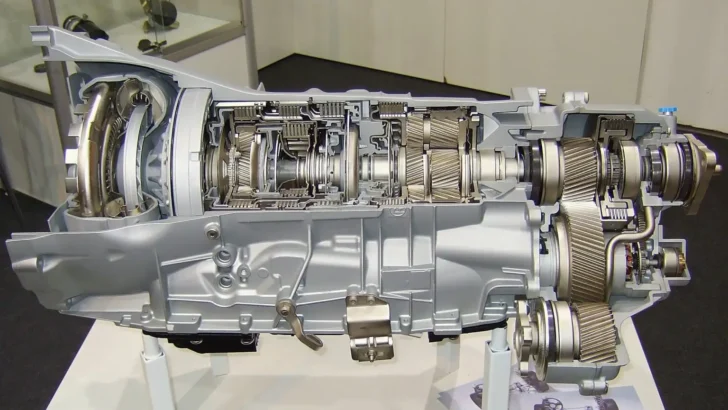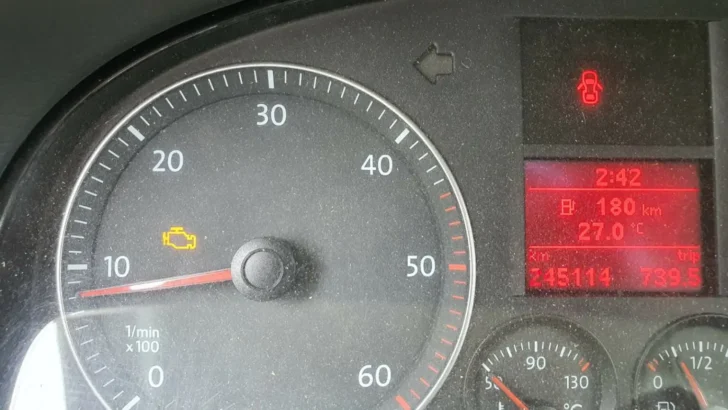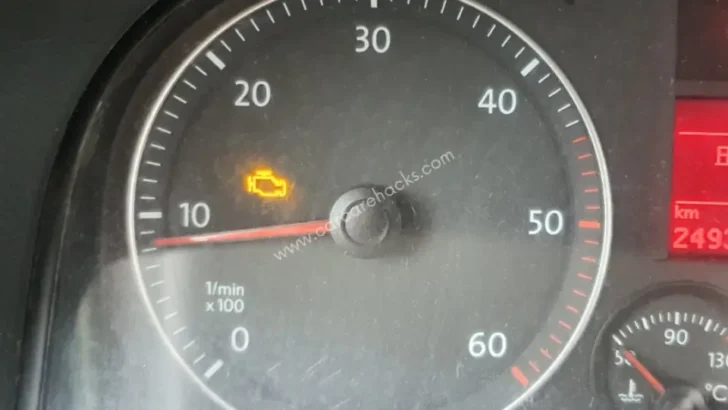Like all parts on vehicles, shift solenoids tend to break down too. But will a bad shift solenoid throw a code? Many car owners are saying that their shift solenoid needed replacement, but they didn’t have a check engine light or a specific code associated with it.
This intrigued me. So, I cleared my afternoon and reach out to a couple of my good old friends who are experts in this area. This is what I found out:
Key Takeaway
- A bad shift solenoid can generally throw a code, triggering the check engine light, although there may be instances where a faulty solenoid does not necessarily generate a code.
- A shift solenoid is an electro-hydraulic valve in a car that controls the flow of transmission fluid, thereby regulating gear shifts in an automatic transmission system.
- Symptoms of a bad shift solenoid include the check engine or transmission warning light being on, delays in shifting, skipping gears, getting stuck in a gear, downshift or upshift problems, buzzing noises, overheating, and the vehicle entering limp mode.
What Is a Shift Solenoid In a Car
A shift solenoid in a car is an electro-hydraulic valve that controls the flow of transmission fluid within the vehicle’s automatic transmission system.
It plays a crucial role in regulating the gear shifts in an automatic transmission.
The vehicle’s onboard computer (ECU) sends signals to the shift solenoids to open or close, which in turn changes the fluid pressure to shift the gears.
There are usually multiple shift solenoids in a vehicle, each corresponding to a different gear.
Their proper functioning is essential for smooth gear transitions and the overall optimal performance of the vehicle.
Will a Bad Shift Solenoid Throw a Code?

Yes, a bad shift solenoid can indeed throw a code because the vehicle’s onboard computer monitors the operation of the transmission, including the operation of the shift solenoids, which control fluid flow through the transmission and thus control gear shifting.
If the computer detects an irregularity with the operation of a shift solenoid, it will trigger a specific error code, which can be read with an OBD-II scanner.
This will typically also cause the check engine light to illuminate on the dashboard.
However, it’s important to note that while a bad shift solenoid will often throw a code, there may be instances where a faulty solenoid does not necessarily generate a code.
Trouble Codes That a Bad Shift Solenoid Will Throw
| Trouble Code | Meaning |
|---|---|
| P0750 – Shift Solenoid A Malfunction | Indicates that one of the solenoids (A) has failed |
| P0751 – Shift Solenoid A Performance or Stuck Off | Shift Solenoid A has performance issues |
| P0752 – Shift Solenoid A Stuck On | Shift Solenoid A is stuck in the ON position |
| P0753 – Shift Solenoid A Electrical | Shift Solenoid A has electrical issues |
| P0754 – Shift Solenoid A Intermittent | Shift Solenoid A has an intermittent electrical fault |
| P0755 – Shift Solenoid B Malfunction | Shift Solenoid B has malfunctioned |
| P0756 – Shift Solenoid B Performance or Stock Off | Shift Solenoid B has performance issues |
| P0757 – Shift Solenoid B Stuck On | Shift Solenoid B is stuck in the ON position |
| P0758 – Shift Solenoid B Electrical | Shift Solenoid B has electrical issues |
| P0759 – Shift Solenoid B Intermittent | Shift Solenoid B has an intermittent electrical fault |
| P075A – Shift Solenoid G Malfunction | Shift Solenoid G has malfunctioned |
| P075B – Shift Solenoid G Performance/Stuck Off | Shift Solenoid G has performance issues |
| P075C – Shift Solenoid G Stuck On | Shift Solenoid G is stuck in the ON position |
| P075D – Shift Solenoid G Electrical | Shift Solenoid G has electrical issues |
| P075E – Shift Solenoid G Intermittent | Shift Solenoid G has intermittent electrical issues |
| P075F – Transmission Fluid Level Too High | TFL sensor has detected that the transmission fluid is too high |
| P0760 – Shift Solenoid C Malfunction | Shift Solenoid C has malfunctioned |
| P0761 – Shift Solenoid C Performance or Stuck Off | Shift Solenoid C has performance issues |
| P0762 – Shift Solenoid C Stuck On | Shift Solenoid C stuck in the ON position |
| P0763 – Shift Solenoid C Electrical | Shift Solenoid C has electrical issues |
| P0764 Shift Solenoid C Intermittent | Shift Solenoid C has intermittent electrical issues |
| P0765 Shift Solenoid D Malfunction | Shift Solenoid D has malfunctioned |
| P0766 Shift Solenoid D Performance or Stuck Off | Shift Solenoid D has performance issues |
| P0767 Shift Solenoid D Stuck On | Shift Solenoid D stuck in the ON position |
| P0768 Shift Solenoid D Electrical | Shift Solenoid D has electrical issues |
| P0769 Shift Solenoid D Intermittent | Shift Solenoid D has intermittent electrical issues |
| P076A Shift Solenoid H Malfunction | Shift Solenoid H has malfunctioned |
What Is The Purpose of The Shift Solenoid
The purpose of the shift solenoid is to control the shifting of the gears in a vehicle. When the solenoid is activated, it allows fluid to flow into the transmission, which then activates the gears. This helps to ensure that the vehicle shifts smoothly and efficiently.
The shift solenoid is an on-and-off electrical valve that lets transmission fluid pass to actuate the gearshift. While most transmissions have two or three solenoids, the number of maximum shift solenoids on transmission is four. Most of the transmissions only employ two or three solenoids 80% of the time.
All modern transmissions use pressure-control solenoids to control the position of the boost valve. The solenoid is controlled by a control module. The control module uses an on-off technique called a duty cycle to control the position of the pintle which ultimately controls the flow of fluid through the solenoid.
Pressure control solenoids are often called PC solenoids, line pressure solenoids, or EPC solenoids which stands for electronic pressure control line.
Transmission solenoids are located inside the transmission. A transmission solenoid’s job is to direct the hydraulic fluid into the valve body to engage the correct gear. Common signs of bad transmission solenoids are erratic shifting, shift slippage, and a transmission that will not shift at all.
Basically, when you have a bad transmission solenoid, the transmission solenoid is unable to send the hydraulic pressure into the transmission valve body to select the proper gear .
What Are The Symptoms Of a Bad Shift Solenoid?
- A check engine light
- Gear shift delay
- Unable to shift gears
- Limp mode
The purpose of the shift solenoids is to open up and allow fluid to pass through the valve body. The channels inside the valve body lead to the automatic transmission, the pressurized clutch packs, and bands to activate specific gear changes.
These solenoids get activated by the transmission control module depending on the vehicle’s speed sensors and others.
The location of the shift solenoids will typically be underneath the transmission oil pan around the valve body.
1. Check engine light

The first symptom of a bad shift solenoid is an engine light. A bad shift solenoid might also throw an OBD code as well. If the transmission control module senses anything wrong with the solenoids, it’s going to turn on the check engine light to warn the driver and set a diagnostic code.
Some cars might show a check light specifically designed for transmission problems.
There are some trouble codes related to the solenoids. While scanning a vehicle with a bad shift solenoid, codes like P0750 (Shift Solenoid A), P0755 (Shift Solenoid B), P0760 (Shift Solenoid C), P0765 (Shift Solenoid D), or P0770 (Shift Solenoid E) might show.
2. Gear shift delay

The second symptom you might be experiencing if your vehicle has a bad shift solenoid is a gear shift delay. The reason why this happens is that the shift solenoids can get dirty and clogged over time.
This usually occurs due to dirty transmission fluid. Since the solenoid is dirty, it’s going to reduce the fluid pressure from passing through efficiently, therefore, delaying the time for the gear change.
3. Unable to shift gears

The third symptom you might be experiencing if your vehicle has one or multiple shift solenoids is your transmission not being able to change gears.
If the shift solenoid is stuck closed or not opening, the fluid will never be able to pressurize through the valve body to activate the specific clutch packs and bands inside the transmission to change gears. If this happens, you won’t be able to put your car in drive or reverse.
4. Limp mode

Limp mode is a safety feature that protects your car. Since the shift solenoid is responsible for changing gears in your car, it puts your safety at risk.
That’s why limp mode is activated. You’ll feel your car is a lot slower because your RPMs and speed will be limited. A vehicle that enters limp mode due to bad shift solenoids is usually stuck in second or third gear.
What Will a Bad Shift Solenoid Do?
A bad shift solenoid will restrict and significantly decrease the flow of transmission fluid and will result in a check engine light, gear shift delay, unable to shift gears at all, or a limp mode.
Basically, transmission fluids travel through the solenoids under pressure and into the valve body to activate a certain gear. When clogged, the shift solenoids are unable to provide a constant flow of pressurized transmission fluid. Without the fluid, you will have a hard time shifting or your vehicle won’t be able to shift gears at all.
FAQs
Q: What are Shift Solenoids?
A: Shift solenoids are components in automatic transmissions that control the flow of transmission fluid, which in turn controls the shifting of gears. These solenoids are electronically controlled by the vehicle’s computer and play a crucial role in the proper operation of the transmission.
Q: How do I know if my Shift Solenoid is Bad?
A: There are a few signs that can indicate a faulty shift solenoid. These include difficulty in shifting gears or the transmission getting stuck in a particular gear, delayed or erratic shifting, slipping of the transmission, or the check engine light coming on. If you experience any of these symptoms, it is recommended to have your vehicle inspected by a qualified mechanic.
Q: Can I Drive with a Bad Shift Solenoid?
A: It is not recommended to drive with a bad shift solenoid for an extended period. If the solenoid is malfunctioning, it can cause damage to the transmission over time and result in costly repairs. It is best to have the issue addressed as soon as possible to prevent further damage.
Q: How Much Does it Cost to Replace a Shift Solenoid?
A: The cost of replacing a shift solenoid can vary depending on the make and model of your vehicle and the labor rates in your area. On average, the cost can range from $200 to $500, including parts and labor.
Q: Can I Replace a Shift Solenoid Myself?
A: Replacing a shift solenoid requires some mechanical knowledge and the right tools. If you have experience working on cars and feel confident in your abilities, it is possible to replace a shift solenoid yourself. However, if you are unsure or do not have the necessary skills, it is recommended to seek professional help.
Q: How Long Does it Take to Replace a Shift Solenoid?
A: The time required to replace a shift solenoid can vary depending on the specific vehicle and the accessibility of the solenoid. In general, it can take anywhere from 1 to 3 hours for a mechanic to complete the replacement.
Q: Can a Bad Shift Solenoid Cause Transmission Overheating?
A: Yes, a malfunctioning shift solenoid can cause transmission overheating. When the solenoid is not functioning properly, it can lead to improper fluid flow and inadequate cooling of the transmission. This can result in increased friction and heat buildup, eventually leading to transmission overheating.
Q: How Often Should Shift Solenoids Be Replaced?
A: Shift solenoids generally do not have a specific replacement interval. They can last the lifetime of the vehicle with proper maintenance. However, they can fail due to wear and tear or electrical issues. If you experience any shifting problems or suspect a faulty solenoid, it is advisable to have it inspected.
Q: Can a Dirty Transmission Fluid Cause Shift Solenoid Problems?
A: Yes, dirty or contaminated transmission fluid can affect the performance of shift solenoids. If the fluid is dirty, it can clog the solenoid valves and restrict their movement. This leads to improper shifting or failure of the solenoids. Regularly changing the transmission fluid and maintaining it at the proper level can help prevent such issues.
In Conclusion
The vehicle’s onboard computer system monitors all operations, including the functioning of the shift solenoids which control the fluid flow through the transmission and thus, manage gear shifting.
If there is an irregularity in the operation of a shift solenoid, the computer system will trigger an error code.
This error code can then be read with appropriate tools and will typically cause the check engine light to illuminate.
